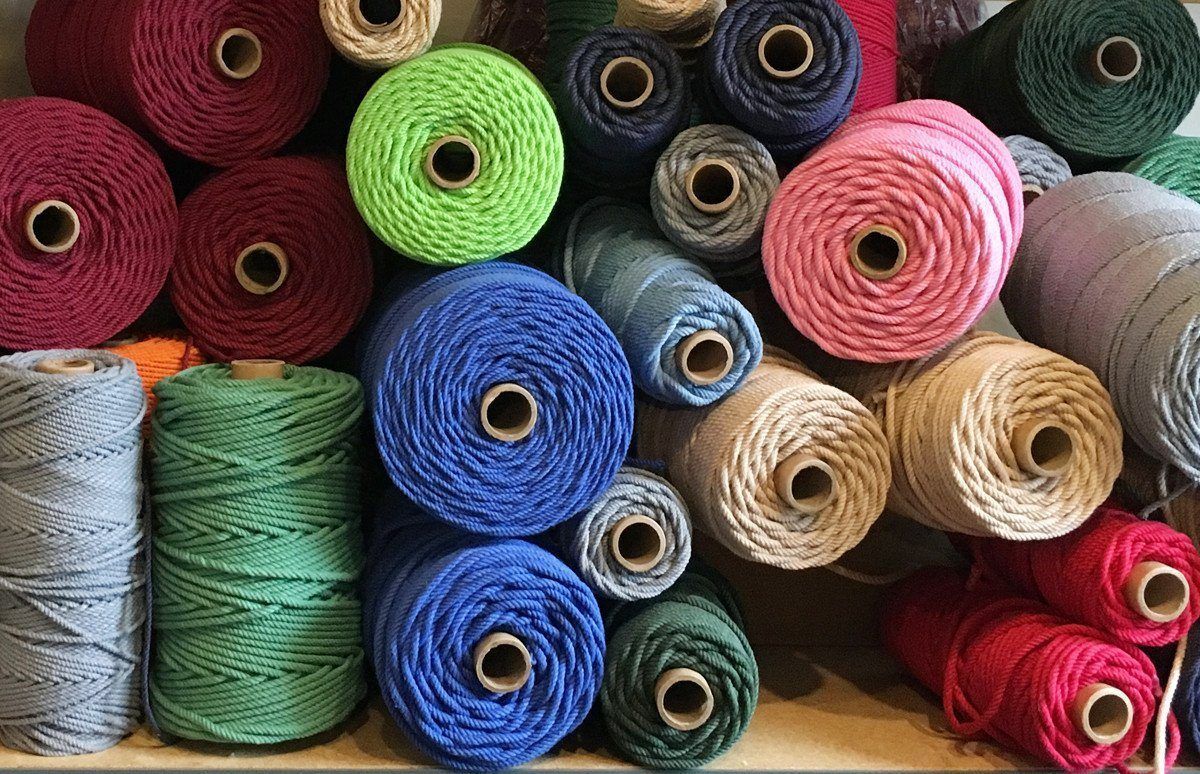Shop
Home Dec

From Cotton to Knots - How Our Ropes and Cords are Made
July 26, 2017 2 min read 1 Comment
One of the hallmarks of the Beaudoin Family tradition (Mystic Knotwork) is our tenacious need to have the best materials made 'just right' so we can make our work right. The best ingredients make the best food.
This dedication to materials comes at a cost. As solid as our artisans and apprentices here are, we are the third or fourth person to touch our material.
- First, the cotton needs to be harvested, combed, made into yarn. Different growing conditions have a huge effect on natural fiber.
- Then, the cotton needs to be treated. Dye, a little wax and it's ready to turn to cordage. This is a key step and using a company that can dye a fixed color accurately, with attention to the environment, is critical.
- Once we have the yarn, the next step in the process, to me, is more critical than my team tying the knots. It is the twist of the fiber and the dimensions of the material.
Back in 2012, I realized that I was spending more time dying cord than making stuff with the cord. I started the hunt and in less than a year, with help, we found a company that would work with dyed yarn, AND a dye house. As we were working, it turned out that our new company couldn't make our coaster material either large enough or tight enough.

4-Ply Rope Compared to 3-Ply
Because I grew up in ropes, I remembered the 4 strand rope my grandfather had in his closet. After talking it out, they gave it a shot. It took just over 6 months to get a workable sample, and they knew the settings. My work does require some very specialized settings on their machine to get what I want, but so long as I plan 5 or 6 months ahead, I can get EXACTLY the right cotton with a perfect twist. It takes skill balancing 4 plys flat like he does.
Four-ply rope passed into distant memory back in the late 1800's when the maypole braiding process became automated. What made 4 strand special, it's smoothness through the blocks of a racing sailboat, was better done by braided line. Then with the rise of the synthetics, the need for four strand rope went away except in situations where thermal resistance and stretch are needed. So, in order to get your pretty, navy woven coasters, I'm pulling out technology that was common in 1850, rare in 1900, and nearly nonexistent in 1940.

I'm so proud of how our cord makes up, it's really easy to promise the best when we start with amazing raw materials.
1 Response
Leave a comment
Comments will be approved before showing up.





Sarah Blink Polakow
September 01, 2023
Hello. I recently bought your how to make a sailor bracelet kit and booklet for my daughter. She loved it!! I actually fell in love with the weight and feel of the cord and was hoping to use it for a large macrame project. Would it be possible to purchase the natural color cord? Thank you so much! Sarah